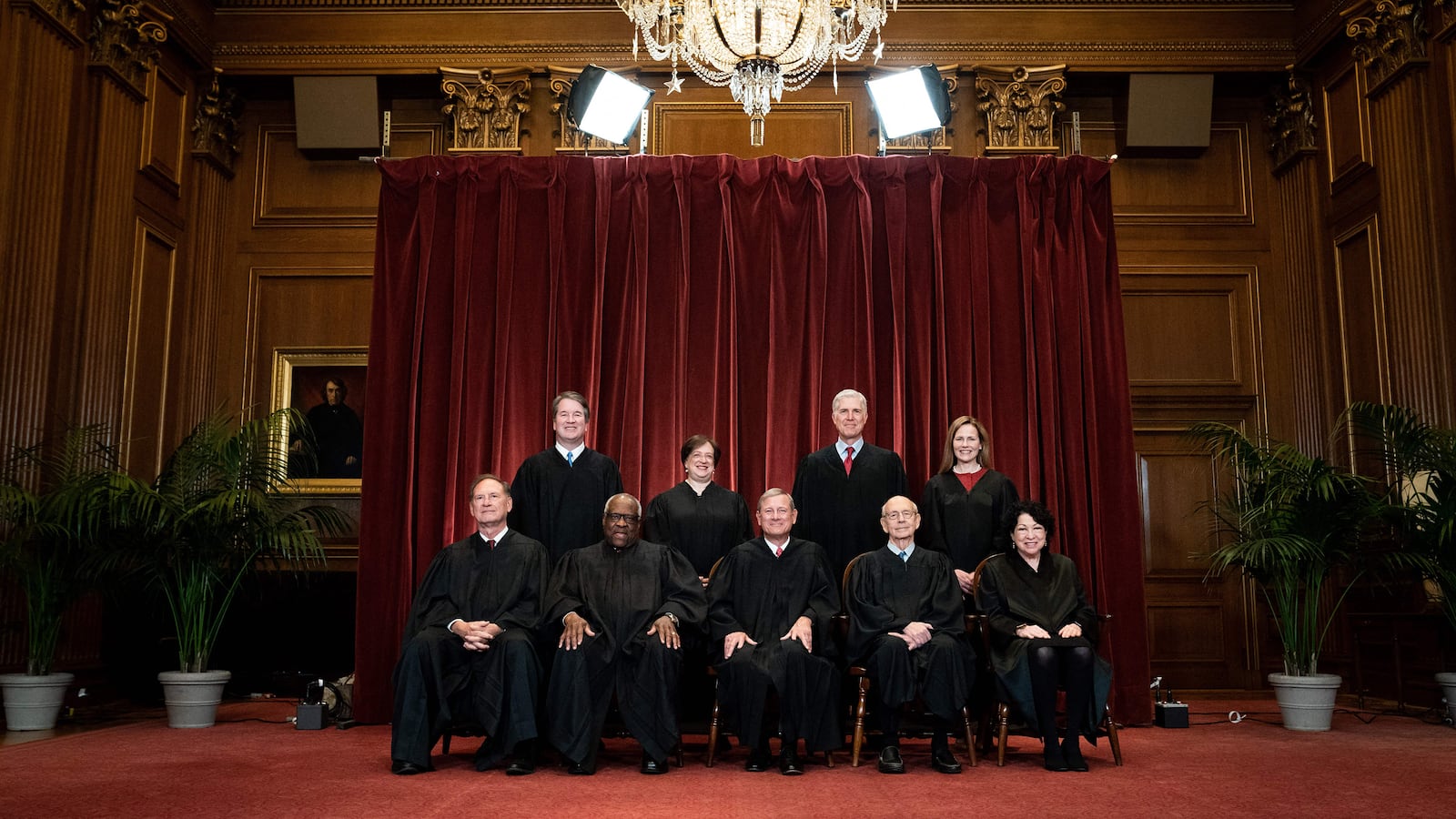The Affordable Care Act has survived its third Supreme Court challenge and is still the law of the land.
Most importantly, it did so with the support of four conservative justices–Chief Justice Roberts and Justices Thomas, Kavanaugh, and Barrett, who voted with three liberals to dismiss the case, California v. Texas, for lack of standing.
They didn’t do this to save Obamacare–indeed, Justice Thomas wrote a concurring opinion maligning the law and the Court’s previous examinations of it. They did it to defend the Constitution: Federal courts hear cases brought by parties who are personally affected by them, and there were none of those here.
Still, that 7-2 result has got to sting. Especially seeing Justices Kavanaugh and Barrett voting with the majority, which they also did in today’s other major case, Fulton v. Philadelphia, about whether taxpayer-funded foster care agencies can turn away gay couples for religious reasons. While that case did grant agencies that right, the decision was much narrower than expected and did not establish a general right for religious organizations to violate non-discrimination laws.
In two major cases on the same day, then, Justices Barrett and Kavanaugh voted for a relatively liberal result, to the great chagrin of Justices Gorsuch and Alito–and, no doubt, to the vast conservative apparatus that promoted them to their current jobs.
Why? Because of judicial conservatism.
Just like in the last challenge to Obamacare in 2015, this result was actually a conservative one–conservative, that is, in the sense of judges declining to act like legislatures and declining to make contentious decisions they don’t need to reach.
In both Fulton and California v. Texas, Chief Justice Roberts, Justice Kavanaugh, and Justice Barrett did a quintessentially judicial-conservative thing: They decided not to reach a big question–Should a key precedent be overturned? Should the Affordable Care Act stand?–because they could decide the case on a smaller one.
In Fulton, that question was whether a particular action was “generally applicable.” In California v. Texas, the question was standing.
On its surface, California v. Texas was about a kind of Zen koan: Is a tax still a tax if no one has to pay it? That’s because Congress, in 2017, voted to reduce the penalty for failure to obtain health insurance to $0. But wait, if the ACA is constitutional as a “tax”–as the Court held in 2012–is that still true when the tax bill is zero?
Ironically, that question is also what doomed the case.
Two of the plaintiffs in the case were individuals who said they suffered a burden by having to buy health insurance. But what burden? If they didn’t comply, they paid $0. That’s not an “injury” as the law understands it.
Texas and other states, meanwhile, said that they were burdened by the costs of operating state-run insurance programs and having more people sign up for them. But the Court found no connection between those costs and the specific provision of the ACA that they were challenging.
No injury, no standing; no standing, no plaintiffs; no plaintiffs, no case. Dismissed.
And so, the third conservative challenge to Obamacare–what Justice Alito, in dissent, called “our epic Affordable Care Act trilogy”–dies with a whimper, not a bang.
Of course, this is a liberal result, substantively speaking. Millions of people will not lose their health insurance. A law that Republicans hate remains on the books, probably for good–at least until Democrats improve on it by adding a public option. “Socialized medicine” (which technically goes back to Medicare, but never mind) is here to stay.
But it is a conservative result, judicially speaking. This case was always about politics. It was initiated by a consortium of conservative states’ attorneys general, funded by dark money. Having failed numerous times to kill the ACA in Congress, conservatives took it to court. Again. And even if they failed, it was always more important to be seen to fighting Obamacare, than to actually fight it.
After all, four years of Trump and a Republican-controlled Congress failed to pass, or even propose, a serious alternative to the ACA–which was, itself, originally a conservative idea. This campaign was optics, not policymaking.
The trouble is, that’s not how the Constitution works. The Court is not a marbled proscenium on which to stage melodramas for Fox News. It is a place where actual cases and controversies are adjudicated. And this “epic trilogy” is not that.
In considering the impact of Justice Barrett on this case last November, I wrote that the eventual result “depends on what kinds of judges the Supreme Court’s conservative supermajority want to be: the principled kind, or the activist kind.”
Well, to the consternation of Trumpists everywhere, the answer in this case and in Fulton is the former. In both cases, Justices Barrett and Kavanaugh took the principled conservative positions of judicial minimalism and judicial restraint, rather than blow past those principles in the name of activist judging. It would not have been hard to generate some more red meat for the Republican base; indeed, Justices Gorsuch and Alito did just that in both of these cases. But these two Trump appointees declined to do so.
To be clear, Justices Barrett and Kavanaugh have still voted in this term with the majority–usually the conservative majority–95 percent and 97 percent of the time, respectively, according to an analysis by Scotusblog. They are not wildly deviating from the conservative norm. But to those who either wished or feared that these two justices would finally own the libs and dismantle the administrative state, California v. Texas and Fulton suggest the contrary.
In the end, the Affordable Care Act was not saved because conservative justices are liberal. It was saved because they are conservative.

